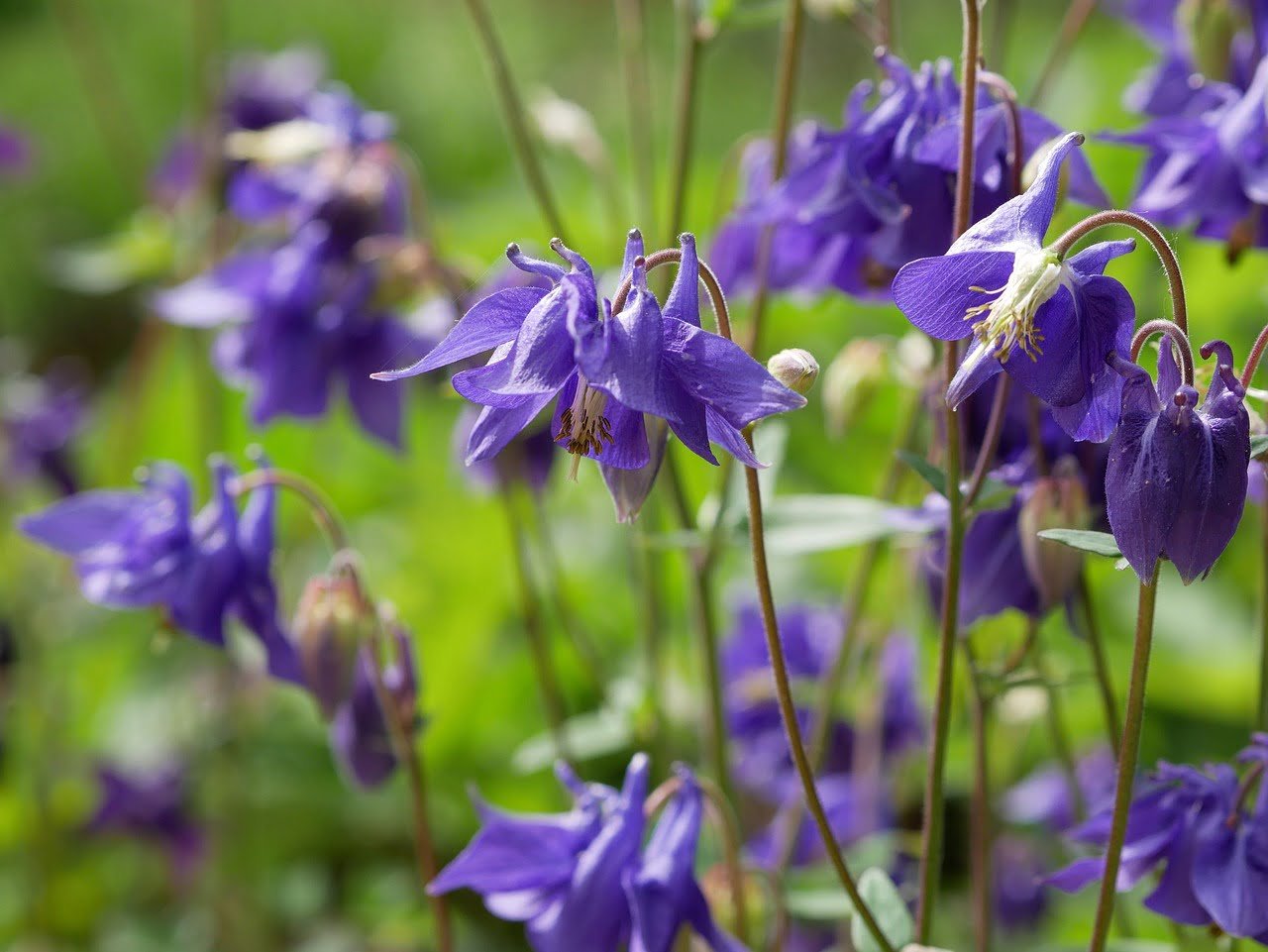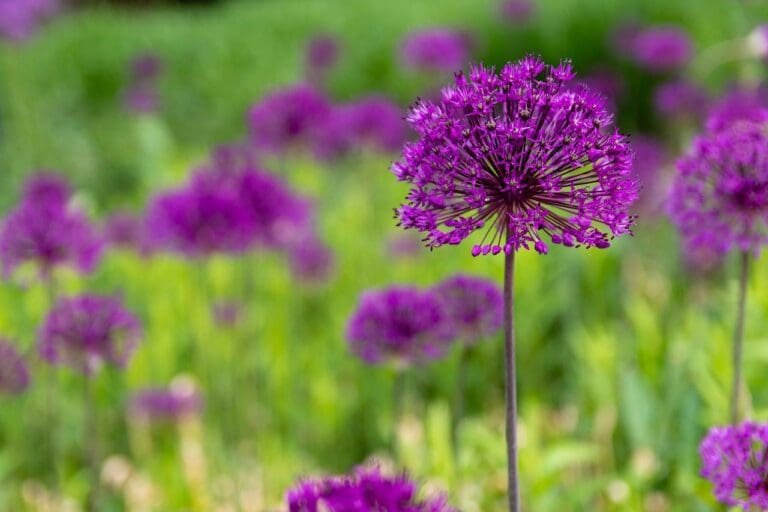Columbine (Aquilegia) is a gorgeous flowering plant admired for its unique, spurred flowers and attractive, blue-green foliage. With its delicate appearance and nodding blooms, Columbine brings an ethereal beauty to any garden. In this article, we will explore the captivating world of Columbine, from its history and classification to growing and care tips.
You might also be interested in: Perennials for Wild Gardens
Introduction
Columbine (Aquilegia) delivers an irresistible charm, flourishing in cottage gardens and naturalized areas. The perennial plant is recognized by its flowers composed of five petals that form backwards-pointing spurs. These spurs contain nectar, attracting pollinators like hummingbirds, bees, and butterflies.
With over 70 species, Columbine offers tremendous diversity in size, flower colour, and growing preferences. From the tiny Alpine Columbine to the large-flowered Grandmother’s Garden Columbine, there is a variety suited to any gardener’s needs. When cared for properly, Columbine will continue blooming year after year, blanketing your garden in these delightful nodding flowers.
Growing Columbine from Seeds or Plants
Growing columbine from seed is a great way to add these captivating flowers to your garden. Here is a step-by-step guide:
Starting Columbine from Seeds
- Choose a variety suited to your climate and garden conditions.
- In early spring, sow seeds directly in the garden or start indoors. Columbine needs light to germinate.
- Barely cover the small seeds with soil. Keep the seed starting mix moist but not soaked.
- Germination takes 14-21 days at 60-65°F. Thin seedlings to 6 inches apart.
- Harden off and transplant outdoors after all danger of frost has passed. Select a site with full sun to part shade.
- Space plants 1-2 feet apart depending on variety size. Water deeply after transplanting.
Planting Columbine Plants
- Shop for young, healthy plants in spring from nurseries or plant sales. Avoid rootbound or leggy specimens.
- Select a planting site with full sun to part shade and well-draining soil enriched with compost.
- Dig a hole the depth of the root ball and twice as wide. Carefully remove from pot and loosen roots.
- Plant at the same level as the container, backfilling soil around the roots. Water thoroughly after planting.
- Space plants 1-3 feet apart depending on variety. Columbine spreads by self-seeding.
- Provide supplemental water during the first summer while plants establish. Mulch to retain moisture.
Columbine Care and Maintenance
Providing proper care ensures Columbines remain healthy and flower abundantly:
- Watering – Provide 1-2 inches of water weekly. Water at soil level to avoid wetting foliage. Avoid allowing soil to dry out completely.
- Fertilizing – In spring, work a balanced organic fertilizer like fish emulsion into soil before growth begins. Columbine are light feeders – excess fertilizer causes lanky growth.
- Deadheading – Remove spent flowers back to a leaf node to encourage reblooming. Don’t rush to cut back foliage after bloom; leaves produce energy for future flowering.
- Staking – Tall varieties may require staking to prevent flopping. Insert stakes early and tie stems loosely using soft ties.
- Pruning – After foliage fades in late fall, cut back plants to near ground level to maintain a tidy shape.
- Pests – Watch for aphids and slugs. Use organic methods like insecticidal soap, neem oil, and diatomaceous earth to control infestations.
- Diseases – Provide good air circulation and avoid overcrowding to prevent issues like powdery mildew. Quickly remove severely infected foliage.
Landscaping with Columbine
With its delicate charm, Columbine is ideal for both formal and informal garden settings:
- Cottage Gardens – Columbine’s noddding blooms and informal growth habit suits casual cottage gardens. Plant in drifts among old-fashioned roses, foxgloves, and catmint.
- Rock Gardens – Many alpine Columbine varieties thrive in rocky, well-drained soil. Use them to cascade over stone walls or edge boulder groupings.
- Woodland Gardens – Columbine flourishes in dappled shade, bringing a magical touch beneath trees and shrubs. Combine with ferns, astilbe, and hellebores.
- Flower Borders – Use mid-sized to tall Columbine varieties as anchors or thriller elements in mixed borders. Allow them to intermingle with lupines, iris, poppies, and daisies.
- Containers – Dwarf Columbine varieties like ‘Nora Barlow’ shine in pots and window boxes. Surround with violas, petunias, and trailing nemesia.
FAQs – Columbine (Aquilegia)
Q. What is the ideal planting location for Columbine?
Columbine thrives in full sun to partial shade. Provide at least 4 hours of direct sun, with some afternoon shade in hot, sunny climates. Shelter from strong winds which can damage the delicate flowers.
Q. How often should Columbine be fertilized?
Columbines are light feeders. Work in an organic vegetable fertilizer or compost in early spring before growth starts and again after initial bloom. Avoid high-nitrogen fertilizers which cause weak, lanky growth.
Q. How to deal with common pests and diseases that affect Columbine?
Watch for aphids, slugs, snails, and powdery mildew. Remove pests by hand or use organic sprays like insecticidal soap and neem oil. Improve air circulation to prevent mildew. Remove and destroy severely infected plants.
Q. What are some companion plants that complement Columbine?
Foxgloves, catmint, coral bells, hardy geraniums, lady’s mantle, and ornamental grasses make excellent Columbine companions. Underplant with bulbs like crocus, daffodils, and species tulips.
Final thoughts
With its nodding blooms in a kaleidoscope of colours, Columbine (Aquilegia) captivates gardeners with its easy-going charm. Take inspiration from its rich history and grow Columbine varieties that match your garden vision – whether a formal border or woodland setting. Provide attentive care and you’ll be rewarded with this delightful plant’s beauty year after year. Explore the wonderful versatility of Columbine and make it a staple of your garden palette.



